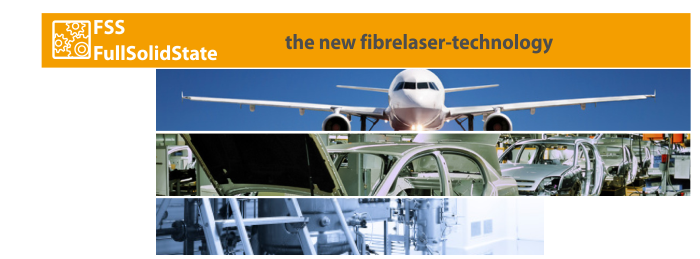

Lasers with flash-lamp pumping have been in use in industry for over 40 years. In many fields, they are the key to the product.
Micro-welding with pulsed lasers is essential to the manufacture of many products.
Over the last 20 years, new components available on the market have made it possible to construct far more compact lasers. Better materials and more efficient electronic components have turned this type of laser into a reliable tool in many areas of technology.
Numerous 1000 Vision systems are now used in fields including medical technology, sensor technology, precision mechanics, dental technology and the jewellery industry.
System-related advantages of these systems irrespective of manufacturer:
– Low starting prices
– High maximum pulse output
– Extremely durable with regular maintenance
System-related disadvantages of these systems irrespective of manufacturer:
– High running costs (power consumption and maintenance)
– Insufficient MTBF for large-scale series production
– Low energy efficiency (3% to 4%)
– Poor beam quality (hard to focus)
– Change in quality of beam as a result of thermal lens effect
– Limited reproducibility (fluctuations in pulse energy and changing beam quality)
– No universal application (cutting and welding) possible without optimisation
Fibre lasers have been on the rise in industry for a number of years now in all welding and cutting fields.
Its high efficiency and reliability have led to widespread use of this type of laser in the automotive industry, and indeed in all other fields with high-volume production. The basis for today’s fibre lasers is laser diodes developed for use in telecommunications.
Work started around 15 years ago on the development of these laser diodes. The aim was to achieve extremely high power density and an extremely long useful life.
Modern single emitters (laser diodes in fibre lasers) can provide outputs of up to 100 watts and are designed to last 100,000 hours. This is equivalent to a service life of c. 11 years in 24/7 operation.
Note: this service life was a requirement of the telecommunications industry as the diodes were often intended for use in amplifiers in underwater systems. Failure in such an application would incur extremely high costs.
The diodes’ long service life and the highly robust, hermetically sealed laser units make this the laser of choice for applications where system reliability and low operating costs are the main priorities.
Flash-lamp pumping systems require alternating current and complex and costly water cooling as a result of their low efficiency of just 3-4 %. Fibre lasers, on the other hand, with an efficiency of > 30%, generally only need an integrated fan and a standard 90-230 volt socket.
comparison between YAG and FSS
Do FSS lasers signal the end of lamp-pumped laser systems? No!
In many sectors where lasers are only used sporadically or a laser is not in continuous operation, the flash-lamp pumping version will continue to have a market. Even in areas where gold and silver are welded with high-power pulses, for example in jewellery production, these devices will still be used.
The higher investment costs required for FSS lasers are particularly worthwhile in all fields requiring high continuous output and excellent availability. The extremely high availability that the systems offer allows them to be used in automated processes, including production lines in the automotive industry.
So what is so new, if fibre lasers have been around for so long?
What is new is that the FSS lasers from Vision Lasertechnik can provide a short-term (pulsed laser) maximum pulse output of 3000 watts.
A conventional fibre laser with a 3000 watt output would be in the six-figure price range.
The technology used in our lasers has a special heat management system.
This means the diode s can briefly be operated at 10 x the usual current in CW mode. The system is therefore based not on a 3000 watt laser, but on a 300 watt laser, which is suitable for brief operation at up to 3000 watts thanks to its special design.
This unique technology makes it possible to supply pulsed fibre lasers with high pulse outputs at a competitive prices compared to flash-lamp pumping systems.
The slightly higher investment costs are soon put into perspective when you factor in availability and operating costs.